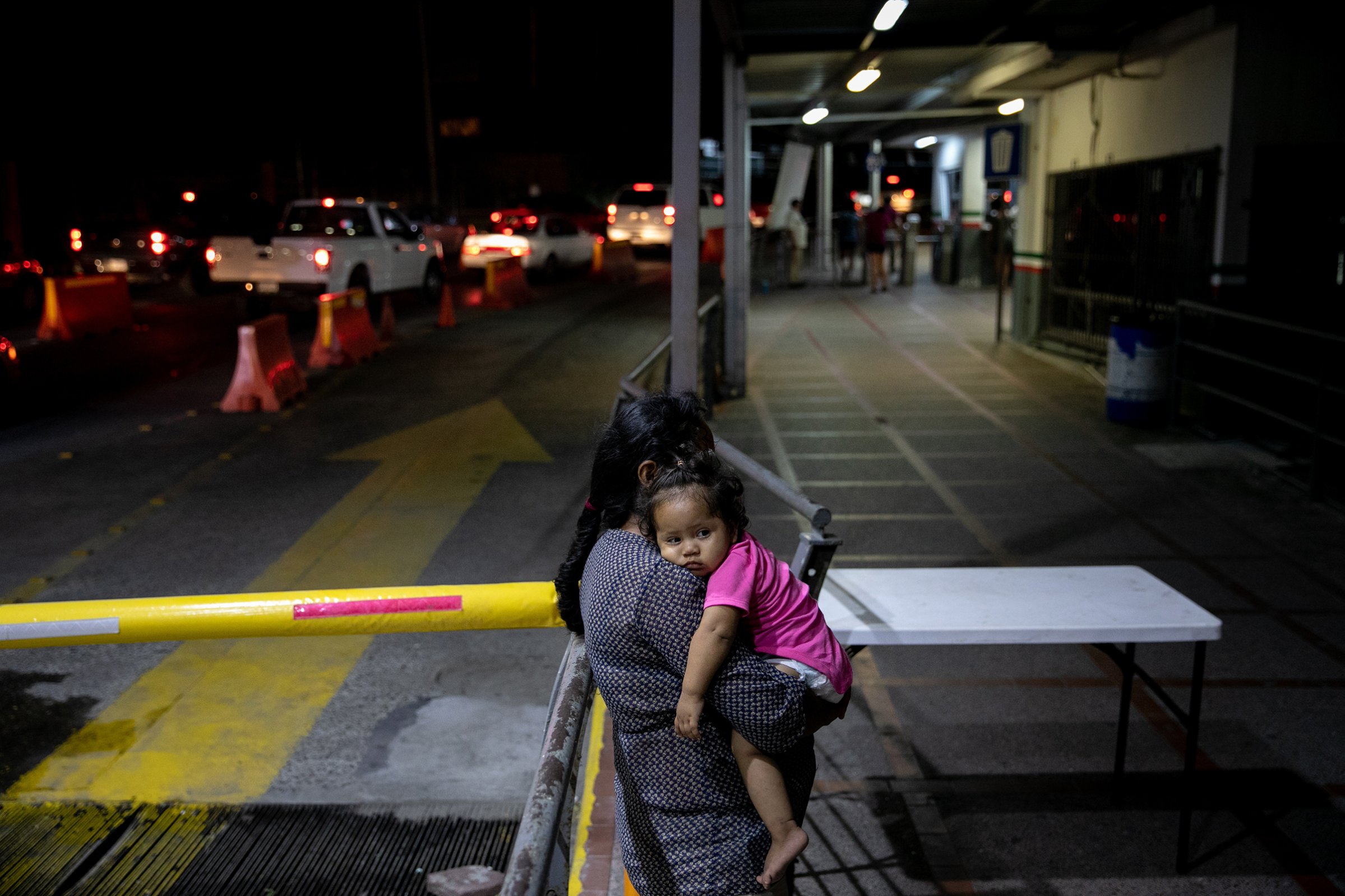
For most, The Gateway International Bridge functions as it should, allowing people to get between the U.S. and Mexico. But on a hot Sunday afternoon, a dozen migrants at the mouth of the bridge weren’t getting anywhere at all. They had been told, once again, to wait.
“For three days we have been sleeping on the floor and they have been telling us the same thing,” one of them, a man named Mbella, told TIME. “But every day, someone else goes and we remain here.”
At a press conference the next day, Aug. 20, President Trump once again touted the border wall he has promised supporters. “The wall is getting longer and taller and stronger each and every day,” he said, even though construction has not begun. The President’s characterization of the physical wall was false, but his Administration has effectively erected an invisible one.
It is built, in part, from situations like the one at the bridge, which illustrates the problem, both logistical and theoretical, with this kind of barrier. The practices that Trump praises for keeping out criminals also punish those who are trying to follow the rules.
Case in point: for months, Administration officials have said that those who wish to enter the U.S. to seek asylum should do so at an official port of entry, a place like the Gateway International Bridge between Matamoros, Mexico, and Brownsville, Texas. There, Customs and Border Protection (CBP) is equipped to screen visitors and process such claims. When the Administration’s “zero tolerance” border policy prompted outcry, Department of Homeland Security Secretary Kirstjen Nielsen said that families who arrived through the ports wouldn’t be separated. But to those who follow instructions, the process can seem slow at best and arbitrary at worst. Advocates say the wait exposes migrants to danger, but CBP says in fact safety is the reason it is limiting entry into crowded border facilities. “No one is being denied the opportunity to make a claim of credible fear or seek asylum,” a spokesperson told TIME in an email.
The renewed attention to the southern border has raised concerns among advocates about the barriers some migrants face even when attempting to cross legally.
“We’re seeing an increase in people showing up at the ports,” says Astrid Dominguez, director of the ACLU of Texas Border Rights Center, “but we’re not seeing them get processed in a timely manner.”
As the Sun set over the Rio Grande, Kevin, 17, stood with his face pressed against the fence where the U.S. and Mexico meet on the Hildago-Reynosa Bridge, another nearby port of entry. “They haven’t told me anything about when they might let me in,” he said. The teen, clutching a bag that held his only belongings, said he was fleeing violence in Guatemala. After about 15 minutes of conversation with TIME, he was waved through.
A woman named Dianellis, 29, said she and her husband had sold everything they had in order to flee persecution in Cuba. They had been waiting to cross the Gateway International Bridge for a week.
As for Mbella, 38, he and his wife left behind five children in their native Cameroon. He said they fled to the Americas after experiencing a violent clash with government officials.
Those who spoke to TIME at the bridges had varied stories but shared a determination to cross. Some understood a bit of what could happen to them next. How long could it take to get processed? How likely was it they’d be detained? And if they did ultimately apply for asylum, it remained to be seen whether their stories would qualify. The regulations governing such matters are complicated, and the vast majority who apply are rejected. But in theory, their fates would be decided at immigration courts, not at the border.
Some in the Administration have made no secret of the fact that their goal is not to address undocumented border crossing but to curtail immigration, period. Those affected include asylum seekers. In June, Attorney General Jeff Sessions said victims of domestic and gang violence can no longer qualify for asylum, and immigration judges under Trump have been finding fewer cases of the “credible fear” that is key for obtaining asylum. The New York Times reports that the Administration is considering eliminating asylum processing at ports of entry altogether. And Trump has suggested sending people back to their home countries immediately, “with no judges or court cases.”
Meanwhile, the Mexican end of the bridges is in the state of Tamaulipas, which the U.S. State Department says is as risky for American travelers as Syria. Most of those crossing the border are unaccompanied minors and family units. Many claim to face hardship or violence at home. Before they can get to the places where those claims can be heard, they must make it across a bridge.
–With reporting by Ilana Panich-Linsman
The Texas Tribune and TIME have partnered to track the family-separation crisis at the U.S.-Mexico border. This story was reported as part of that partnership.
This appears in the September 03, 2018 issue of TIME.
More Must-Reads from TIME
- Why Trump’s Message Worked on Latino Men
- What Trump’s Win Could Mean for Housing
- The 100 Must-Read Books of 2024
- Sleep Doctors Share the 1 Tip That’s Changed Their Lives
- Column: Let’s Bring Back Romance
- What It’s Like to Have Long COVID As a Kid
- FX’s Say Nothing Is the Must-Watch Political Thriller of 2024
- Merle Bombardieri Is Helping People Make the Baby Decision
Contact us at letters@time.com